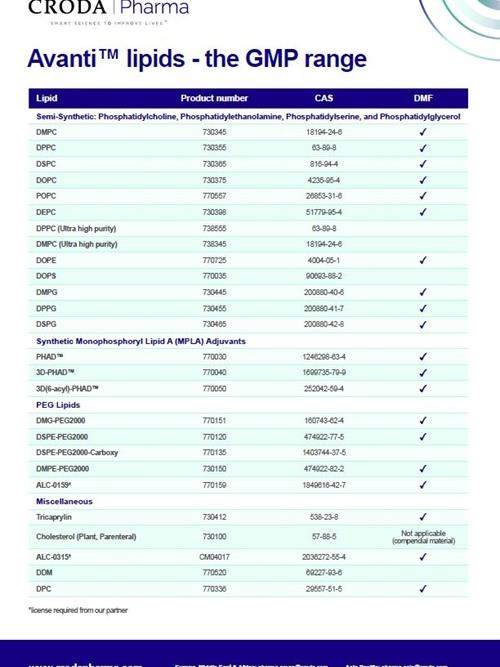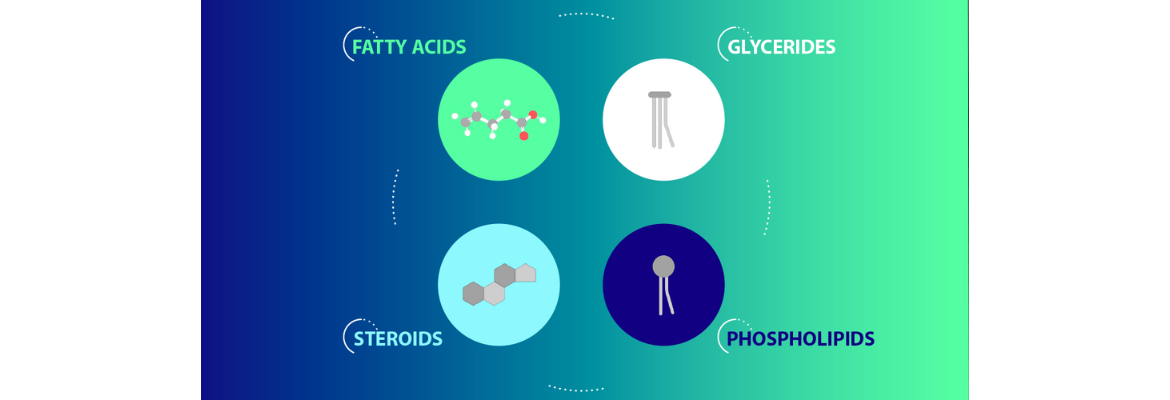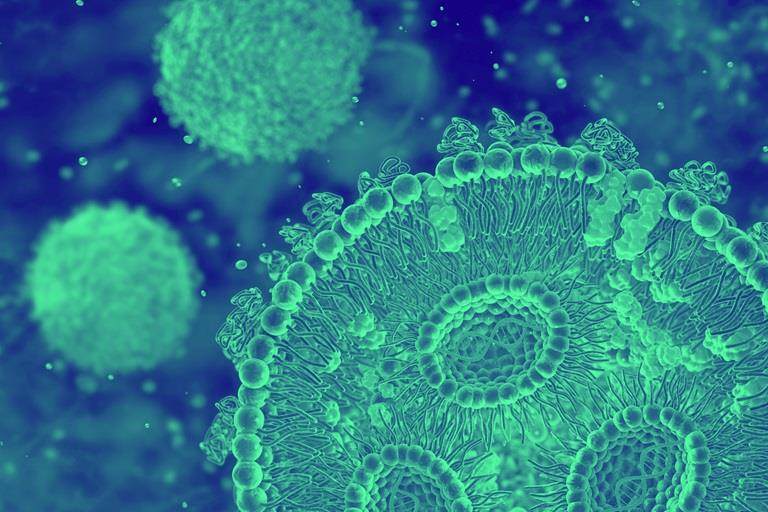Lipids in Small-Molecule Pro-Drugs
![]() This is an interactive article, simply click the underlined words for more information
This is an interactive article, simply click the underlined words for more information
Avanti™ lipids - the GMP range


How Can Lipids Improve Small-Molecule Drugs?
There are several barriers for drug molecules to overcome in the developmental phase to be able to move into clinical trials – economical, biological, and chemical. Biological barriers which include epithelium, endothelium, and elimination, all act against a drug by restricting its access to the target action site.
Several strategies have been used to address these barriers and aid the drug’s journey to its target. As previously mentioned, lipid nanoparticles are commonly used to deliver therapeutics. They act to protect their load from biological barriers and deliver it to the interior of a cell. Another strategy involves conjugation of the active drug with a non-toxic, non-active promoiety to create a prodrug. The non-toxic, non-active pro-moiety is cleaved from the active drug once it reaches its target and is then rapidly excreted.
Non-active, non-toxic moieties conjugated with small-molecule active drugs are typically chosen from well-known biocompatible compounds – lipids, peptides, or amphipathic polymers. Lipids are naturally abundant and commercially available, non-toxic, biocompatible, and biodegradable which make them strong candidates for small molecule lipidic prodrugs (SLPs). In addition to these characteristics, many SLPs can self-assemble into stable nanostructures.
What Lipids are Being Used as Pro-Moieties in Lipid Prodrugs?
Currently, there are at least four types of lipids being investigated as pro-moieties in SLPs – fatty acids, glycerides, steroids, and phospholipids (Huang, et al, 2022).
Fatty Acids (FAs)
The free carboxylic acid of a FA makes it easy for these lipids to conjugate with free hydroxyl or amine functional groups of other molecules. These fatty acids are similar, and in some cases identical, to lipids in biological lipid membranes. So, these FAs can interact with lipid membranes and therefore improve a drug’s ability to penetrate the membrane and be taken into a cell. The long hydrocarbon chain is another key characteristic of FAs. The hydrocarbon chain facilitates the self-assembly process and aids the formation of nanoparticles.
Glycerides
Triglycerides get a bad rep because in high levels they can be detrimental to human health. Well, the same triglycerides that are bad for your health in high levels, can also be used to deliver small molecule drugs and treat diseases. The backbone of a glyceride is glycerol, a three-carbon chain with one free hydroxyl group on each carbon. A triglyceride is formed when a FA is conjugated to each of the free hydroxyl groups of a glycerol molecule. The same reason that makes a triglyceride an excellent energy storage molecule also makes it a great SLP option. Unlike the short, one-step metabolism pathway of many small molecules, the metabolic pathway of triglyceride molecules is rather lengthy. Ultimately a triglyceride is fully metabolized to a monoglyceride and then re-acylated and recirculated as lymph lipoproteins. Triglyceride mimicking prodrugs are advantageous due to their association with the lymphatic transport pathway.
Steroids
Bile acids as enhancers of drug pharmacokinetics is a promising lipidic prodrug strategy. Bile acids have a particular set of characteristics that make them an ideal candidate for SLPs. Bile acids are amphipathic detergent molecules which make them especially useful for drug solubilization and cell membrane permeation. A small molecule drug suffering from low aqueous solubility and low membrane permeability might be a perfect candidate for a bile acid SLP. Typically found in the liver and small intestine, bile acids are capable of withstanding the environment of the gastrointestinal system and mediating the transportation and absorption of conjugated molecules via bile acid transporters (Pavlovic, et al., 2018).
Phospholipids
Phospholipids are commonly used in lipid nanoparticles and liposomes due to their ability to interact with the outer surfaces of cell membranes, among other desirable characteristics. Phosphatidylcholine (PC) is a major component of cell membranes and a great candidate for phospholipid-drug conjugates (PCDs). Drugs can be linked to phospholipids via the phosphate group or glycerol backbone. Using PCDs in liposomes showed increased drug loading efficiency, targeting ability, and stability compared to traditional liposomes (Yu, et al., 2020).
If you want more information about each of these lipidic prodrug strategies and specific examples of each, click here. Avanti continues to provide the highest quality, most innovative lipid products for your research. Take a look at our bile acid products and PC derivatives if you’re interested in enhancing your small molecule drug profile!


